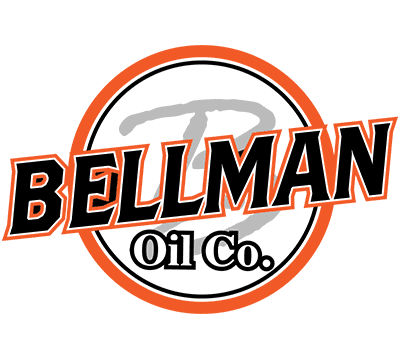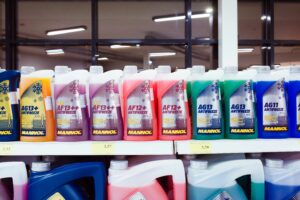Rust is metal’s ultimate enemy. For industries that rely on metal tools and components, corrosion can lead to costly repairs and slowed productivity. Rust preventatives, the versatile guardians of metal, step in to shield metal surfaces from the elements that cause corrosion. These specialized formulations create a protective barrier, repelling moisture, oxygen, and other corrosive elements. Let’s delve into the world of rust preventatives, exploring their adaptability, the different types available, and the best ways to use them to protect your equipment and parts.
What is a rust preventative?
A rust preventative is a protective coating or treatment that inhibits the formation of rust and corrosion on metal surfaces. These products create a moisture-resistant barrier, preventing oxidation—the chemical reaction between iron, oxygen, and water that leads to rust.
Industries such as manufacturing, automotive, aerospace, and metalworking rely on rust preventatives to protect raw materials, finished products, and machinery during storage, transportation, and daily operations.
Why Rust Prevention Matters
Rust is more than just an eyesore. Corrosion is a serious issue that can impact the performance and safety of machinery. Here are some key reasons why preventing rust should be a top priority:
- Extends Equipment Lifespan – Rust weakens metal by wearing away the strength and durability of the material. Using rust preventatives helps extend the life of machinery and parts.
- Reduces Maintenance Costs – Rusted components need to be repaired or replaced, which can be expensive. Preventative measures save money by reducing the need for repairs.
- Protects Product Quality – In industries such as automotive or aerospace, rust on components can lead to product defects and failures.
- Ensures Safety – Rust can impact the structural integrity of machinery, leading to workplace accidents and injuries. Preventing rust helps maintain the strength and safety of metal structures and equipment.
Types of Rust Preventatives
Different industries and applications require different types of rust prevention. Here’s a look at the most common rust preventatives and where they work best:
Oil-Based Rust Preventatives
Oil-based rust preventatives form a thin, lubricating layer on metal surfaces, repelling moisture and contaminants. They’re ideal for machinery and moving parts that require both rust protection and lubrication.
- Best for: Long-term storage, industrial equipment, metal tools, and machinery
- Pros: Easy application, provides lubrication, suitable for extreme environments
- Cons: Can attract dust and dirt over time
Bellman Oil offers premium oil-based rust preventatives that provide excellent protection during storage and transportation.
Water-Based Rust Preventatives
Water-based preventatives use corrosion inhibitors that form a protective layer without leaving behind an oily residue. They’re perfect for applications where a cleaner finish is required.
- Best for: Parts that need to be painted or further processed, environmentally friendly applications
- Pros: Easy to clean off, non-oily, lower environmental impact
- Cons: May require multiple applications for extended protection
Wax-Based Rust Preventatives
Wax-based preventatives provide long-term protection by forming a durable, moisture-resistant film over metal surfaces. These are commonly used for parts that need to withstand harsh conditions.
- Best for: Outdoor storage, long-term protection, marine environments
- Pros: Extremely durable, provides excellent corrosion resistance
- Cons: Harder to remove if needed for further processing
Applications of Rust Preventatives
Rust preventatives are used across multiple industries to protect critical components. Here are some of the most common applications:
Manufacturing & Metalworking
In the manufacturing process, metal machinery and components are exposed to moisture and varying temperatures, which can lead to the development of rust. Applying a rust preventative keeps components in optimal condition.
Storage & Warehousing
Metal parts, tools, and machinery sitting in storage can quickly accumulate rust, especially in humid or outdoor environments. Applying a rust preventative before storing these items keeps them protected from oxidation.
Transportation & Shipping
Metal components transported over long distances can encounter fluctuating temperatures and humidity levels, making them prone to rust. Using rust preventatives ensures that parts arrive in perfect condition.
Automotive & Aerospace
The automotive and aerospace industries rely on rust preventatives to maintain the integrity of metal components, preventing corrosion in everything from engine parts to aircraft components.
Choosing the Right Rust Preventative
Selecting the right rust preventative depends on several key factors:
- Environmental Conditions – Humidity, temperature, and exposure to corrosive elements (like salt or chemicals) impact which type of rust preventative you need.
- Duration of Protection – Short-term protection (weeks to months) may require lighter oil-based solutions, while long-term protection (months to years) calls for wax-based or heavy-duty coatings.
- Post-Application Processes – If the part needs to be painted or welded after protection, choose a preventative that’s easy to remove or compatible with further processing.
Rust prevention is critical to maintaining metal components and equipment. By understanding the different types of rust preventatives and their applications, businesses can ensure their machinery and materials stay protected, reducing maintenance costs and extending product lifespan.
Contact Us Today!
Bellman Oil offers high-quality rust preventatives designed to keep your metal parts in top condition. Whether you need short-term protection for shipping or long-term rust resistance for storage, we have the right solutions for you.
Need expert advice on rust prevention? Contact Bellman Oil today to find the right rust preventative-for your needs.




